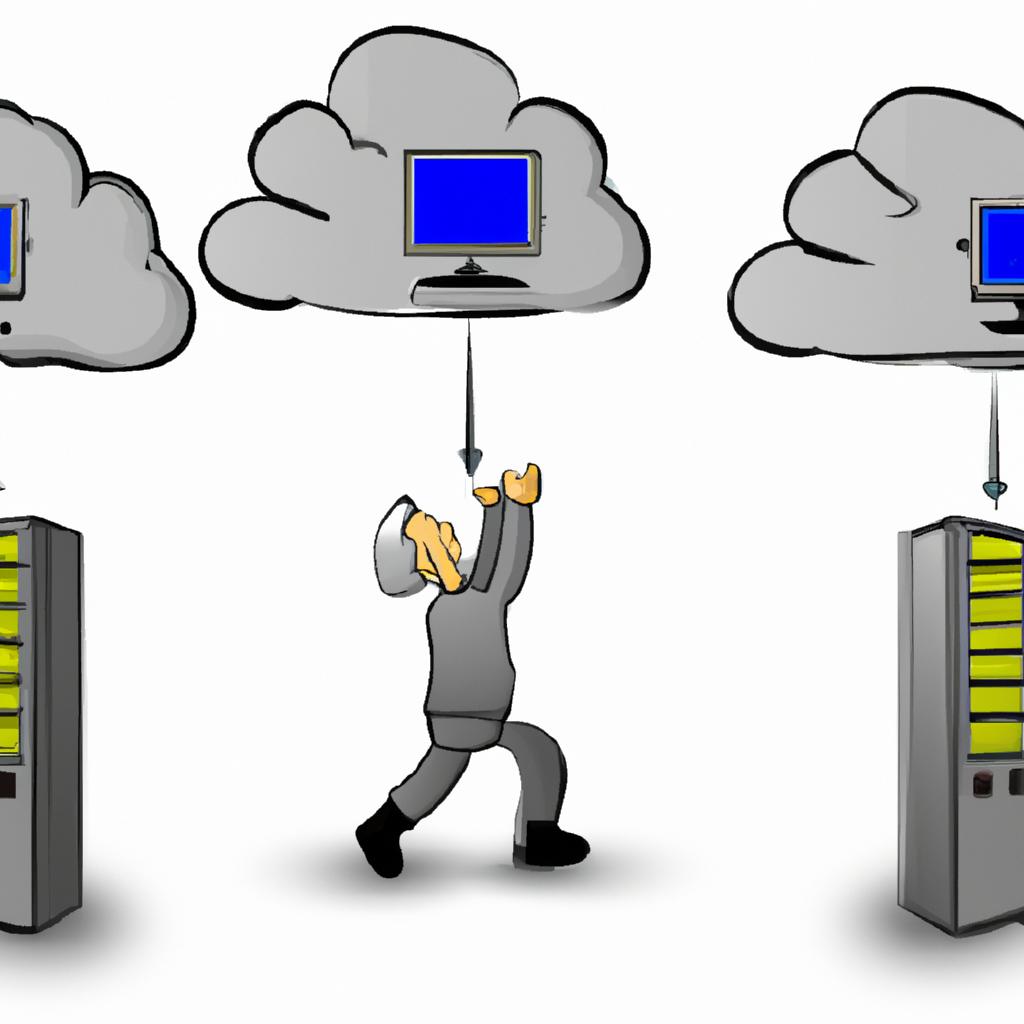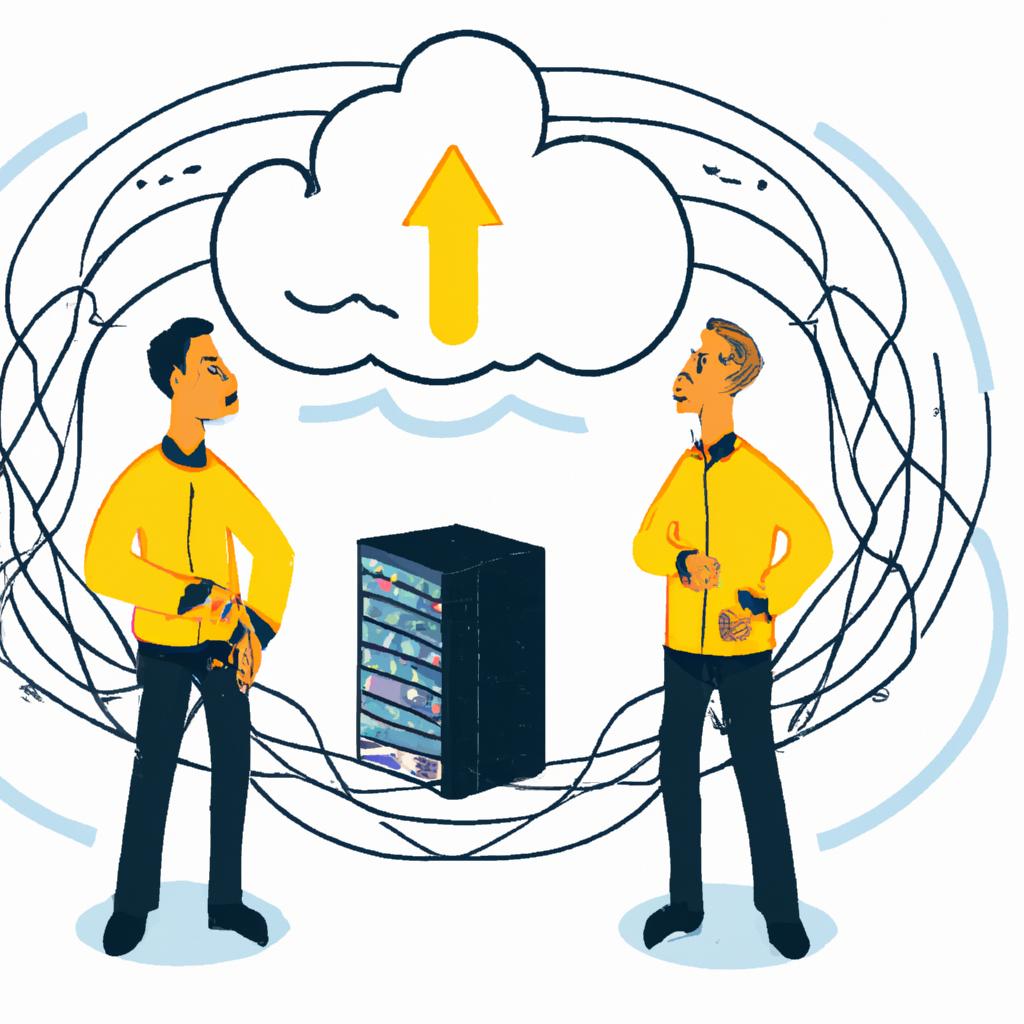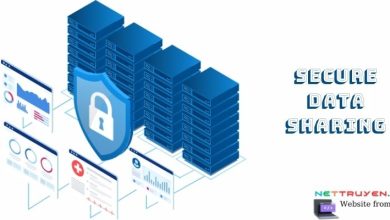Data Center to Cloud Migration: Benefits, Challenges, and Best Practices

In today’s digital world, transitioning from a traditional data center to the cloud has become a crucial aspect of business growth and expansion. data center to cloud migration refers to the process of transferring data, applications, and other IT resources from an on-premise data center to a cloud-based infrastructure.
The importance of data migration to the cloud cannot be overstated. It enables businesses to achieve greater scalability, flexibility, and cost savings while improving security and compliance. However, data center to cloud migration poses significant challenges and requires proper planning and execution to ensure a successful transition.
In this article, we will explore the benefits and challenges of data center to cloud migration, planning for a successful transition, and best practices to ensure a smooth and seamless migration process. So, grab a cup of coffee and let’s dive in!
Challenges of Data Center to Cloud Migration

Moving from a traditional data center to the cloud is a complex process that presents several challenges. To ensure a successful transition, businesses need to identify and address these challenges beforehand. Here are some of the top challenges associated with data center to cloud migration:
Compatibility Issues
One of the biggest challenges of data center to cloud migration is compatibility issues. Applications and workloads that run on-premise may not be compatible with the cloud environment. This can result in data loss, system downtime, or even complete application failure. To mitigate this risk, businesses need to assess and test their applications’ compatibility with the cloud environment before the migration process.
Data Security Concerns
Data security is a top priority for businesses, and migrating to the cloud presents several security concerns. Data breaches, unauthorized access, and data loss are some of the risks associated with cloud migration. To ensure data security, businesses need to implement robust cybersecurity measures, such as encryption, access controls, and regular security audits.
Bandwidth and Connectivity Issues
Cloud migration requires a significant amount of data transfer, which can strain network bandwidth and result in connectivity issues. This can lead to slow application performance, system downtime, and data loss. To address this challenge, businesses need to assess their network bandwidth and connectivity requirements and ensure that their network infrastructure can support the migration process.
Technical Expertise and Resources
Data center to cloud migration requires technical expertise and resources, such as cloud architects, IT professionals, and project managers. However, many businesses may not have the necessary resources or expertise in-house. To overcome this challenge, businesses can partner with a cloud service provider or enlist the help of a third-party migration service provider.
Planning for Data Center to Cloud Migration

Migrating from a data center to the cloud is a significant undertaking that requires careful planning and execution. Proper planning is crucial to ensure a smooth and successful transition. In this section, we will discuss the key factors to consider when planning for data center to cloud migration.
Assessment of Current Infrastructure and Applications
Before migrating to the cloud, it’s essential to conduct a thorough assessment of your current infrastructure and applications. This assessment will help you identify which applications and data are suitable for cloud migration. You can also determine the current infrastructure’s strengths and weaknesses, which will help you design an effective migration strategy.
Choosing the Right Cloud Provider
Choosing the right cloud provider is a critical decision that can impact your migration success. The cloud provider you choose should meet your business needs and offer the necessary services and support. Consider factors such as security, compliance, scalability, and cost when selecting a cloud provider.
Developing a Migration Strategy
Developing a migration strategy is essential to ensure a smooth transition. The strategy should include timelines, milestones, and a detailed plan for each stage of the migration process. Your migration strategy should also address potential challenges and risks and include a plan for mitigating these risks.
Assigning Roles and Responsibilities
Assigning roles and responsibilities is critical to ensure that everyone involved in the migration process knows their roles and responsibilities. Assign a migration team leader, and identify the key stakeholders and their roles. This will help ensure a coordinated effort and reduce the risk of confusion or miscommunication during the migration process.
Best Practices for Data Center to Cloud Migration
When it comes to data center to cloud migration, proper planning and execution are essential for a seamless transition. Here are some best practices that can help ensure a successful migration:
Testing and Validation
Before migrating data and applications to the cloud, it’s crucial to conduct testing and validation to identify any compatibility issues and ensure that everything works as expected. This involves testing the migration process on a small scale before migrating the entire infrastructure.
Data Backup and Recovery Plan
Data is the lifeblood of any business, and losing it can be catastrophic. Therefore, it’s essential to have a solid data backup and recovery plan in place before migrating to the cloud. This ensures that you can quickly recover data in the event of a disaster or data loss.
Monitoring and Optimization
After migrating to the cloud, it’s crucial to monitor the infrastructure’s performance and optimize it to ensure that it’s running efficiently and effectively. This involves monitoring resource utilization, identifying and addressing performance bottlenecks, and optimizing configurations for better performance.
Employee Training and Change Management
Finally, it’s crucial to provide employee training and change management during the migration process. This ensures that employees are familiar with the new infrastructure and can use it effectively, minimizing disruption and maximizing productivity. Providing training and change management also helps to alleviate any concerns or resistance to change.
By following these best practices, businesses can ensure a smooth and seamless transition from a data center to the cloud, ultimately achieving greater scalability, flexibility, and cost savings.
Conclusion
In conclusion, data center to cloud migration is a critical process for businesses to achieve greater scalability, flexibility, and cost savings while improving security and compliance. While the process may be challenging, proper planning and execution can ensure a successful transition.
By assessing current infrastructure and applications, choosing the right cloud provider, developing a migration strategy, and assigning roles and responsibilities, businesses can mitigate potential risks and ensure a smooth and seamless migration process.
Additionally, best practices such as testing and validation, data backup and recovery plan, monitoring and optimization, and employee training and change management can further enhance the success of data center to cloud migration.
As businesses continue to evolve and grow, data center to cloud migration will remain a critical aspect of digital transformation. By staying informed and adopting the best practices, businesses can unlock the full potential of the cloud and drive innovation and growth.
Conclusion: So above is the Data Center to Cloud Migration: Benefits, Challenges, and Best Practices article. Hopefully with this article you can help you in life, always follow and read our good articles on the website: nettruyen.dev




